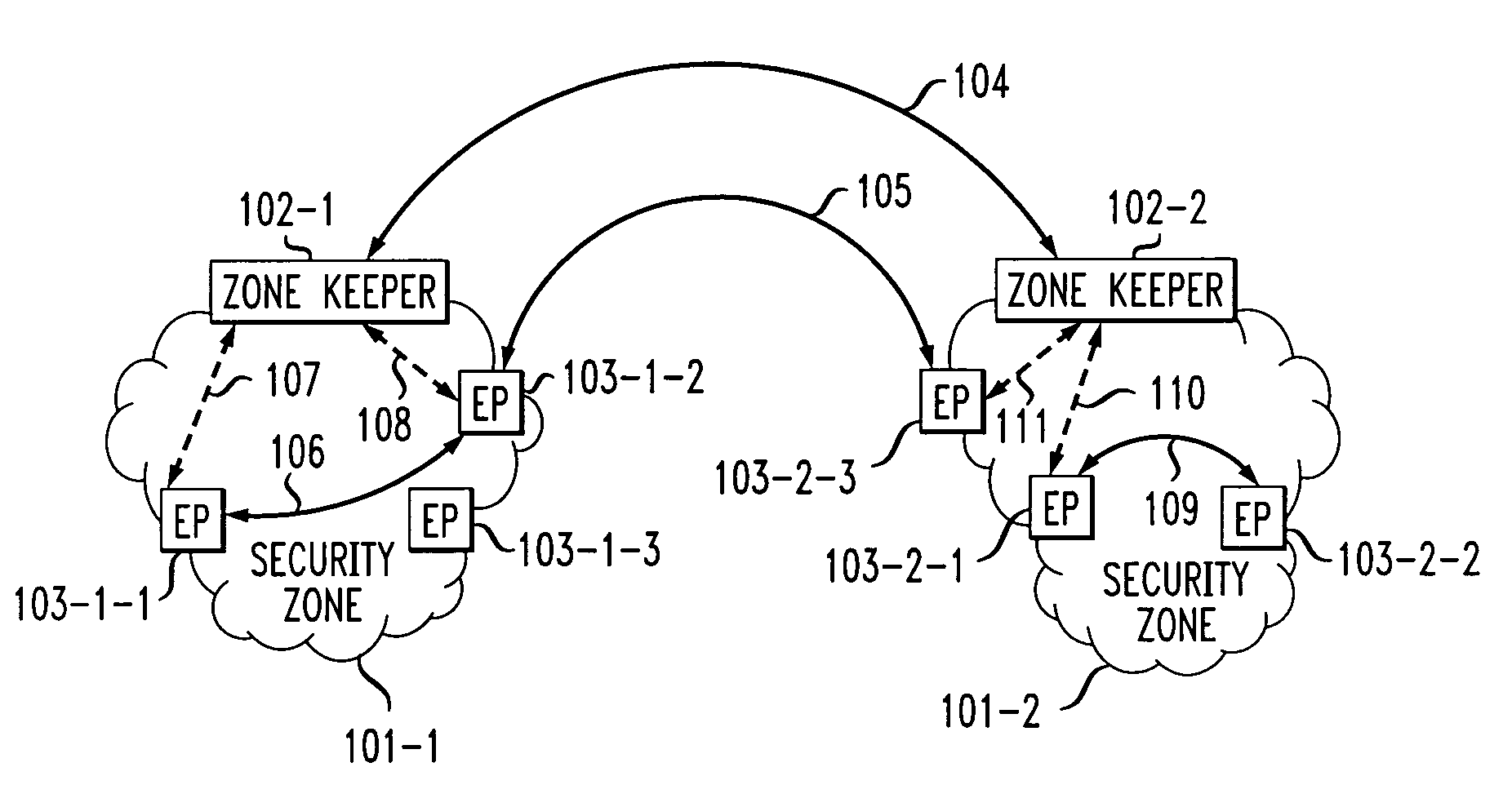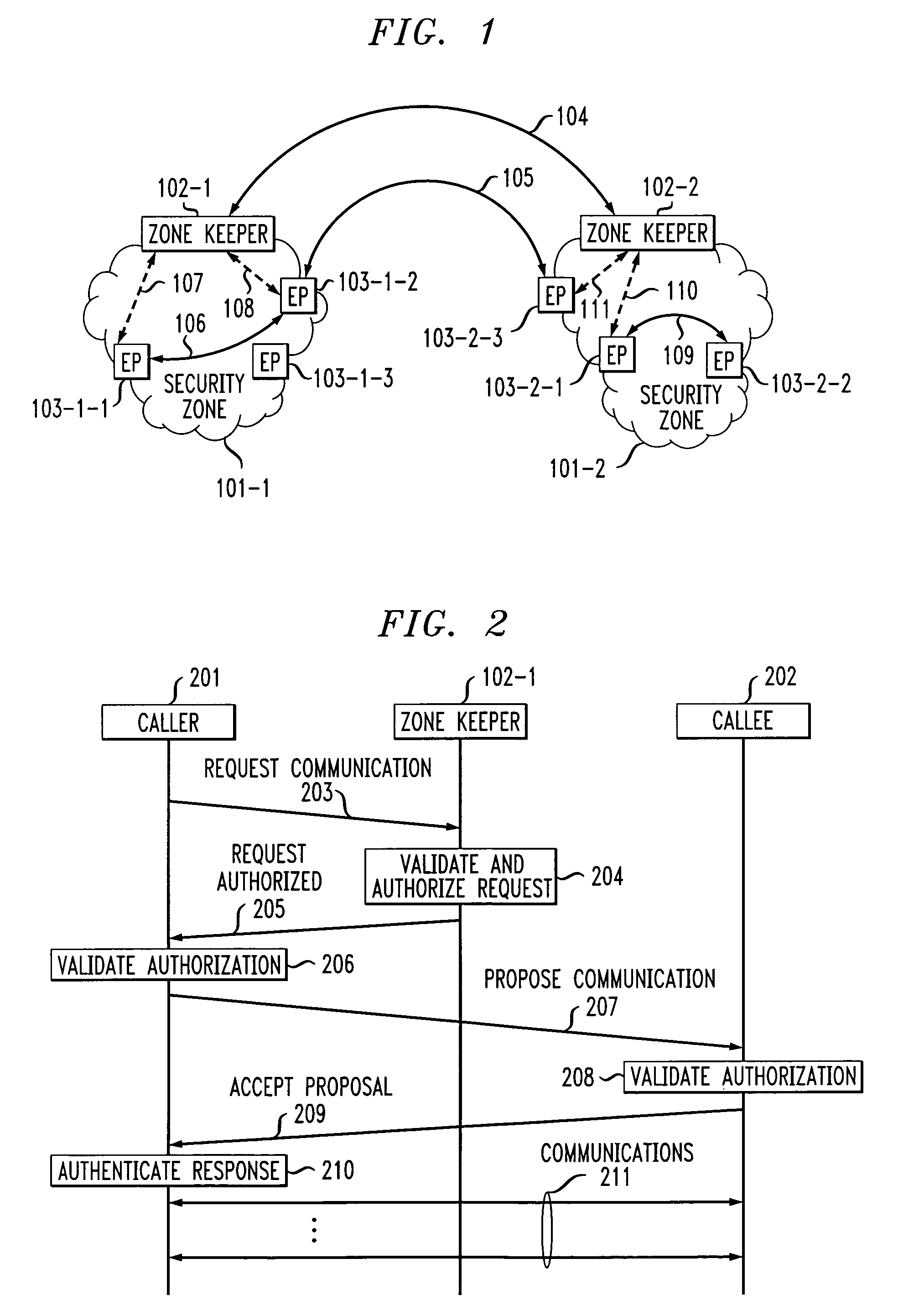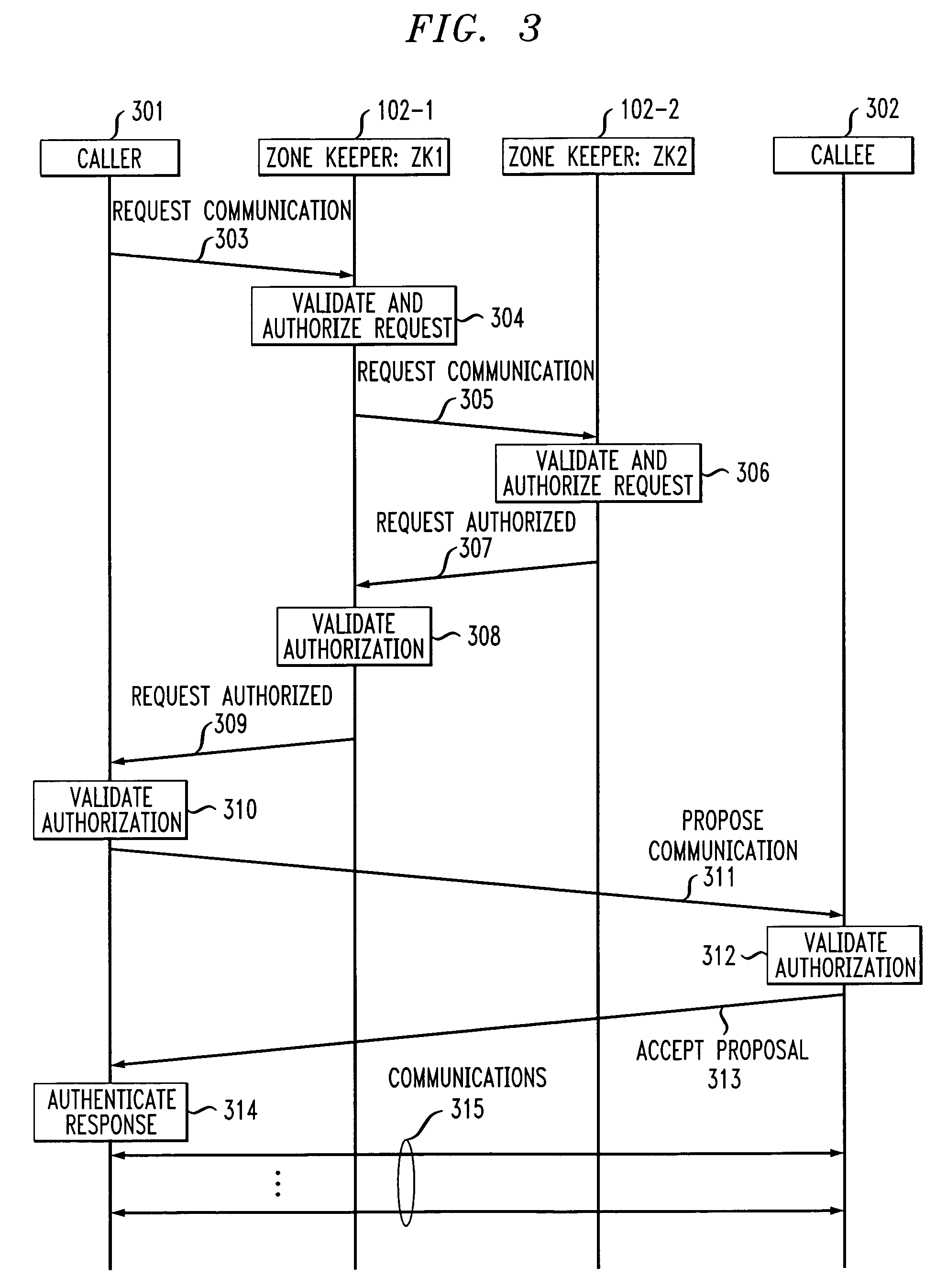Dual-tier security architecture for inter-domain environments
a security architecture and domain technology, applied in the field of multimedia communication security, can solve the problems of no real cost effective solution for certificate revocation and key management, inability to scale, and inability to assume future systems
- Summary
- Abstract
- Description
- Claims
- Application Information
AI Technical Summary
Benefits of technology
Problems solved by technology
Method used
Image
Examples
Embodiment Construction
[0016]FIG. 1 shows, in simplified form, details of a two tiered security system including an embodiment of the invention. Specifically, shown is a multiple zone, i.e., domain, system including Security Zone 101-1 and Security Zone 101-2. For simplicity and clarity of exposition only two Security Zones are shown and described here, however, it will be apparent that any desired number of Security Zones may be employed depending on their manageability. Each of Security Zones 101-1 and 101-2 is a collection of so-called endpoints that are managed as an enterprise. Endpoint devices are intended to operate on behalf of their users to communicate with each other and their so-called Zone Keeper. A Security Zone may be established in any number of environments, for example, a corporate office and / or branch office, a cable system within a prescribed geographical area, a local calling area of a telephone company or the like. Note that physical environments or communication devices do not restr...
PUM
 Login to View More
Login to View More Abstract
Description
Claims
Application Information
 Login to View More
Login to View More - R&D
- Intellectual Property
- Life Sciences
- Materials
- Tech Scout
- Unparalleled Data Quality
- Higher Quality Content
- 60% Fewer Hallucinations
Browse by: Latest US Patents, China's latest patents, Technical Efficacy Thesaurus, Application Domain, Technology Topic, Popular Technical Reports.
© 2025 PatSnap. All rights reserved.Legal|Privacy policy|Modern Slavery Act Transparency Statement|Sitemap|About US| Contact US: help@patsnap.com



